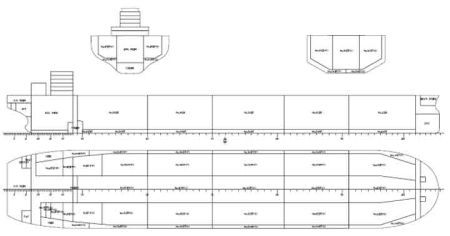
Classification society ClassNK has granted AIP (Approval in Principle) to a tanker design that reduces the weight of ballast water required by about 65 percent compared with a conventional hull form.
Although IMO's Ballast Water Management Convention has yet to enter into force, installing the ballast water treatment systems called for in the convention is already presenting owners with both financial and technical challenges. The new MIBS (Minimal Ballast Water Ship) VLCC design paves the way for the use of smaller ballast water treatment systems and reduced fuel consumption.
Developed by Namura Shipbuilding Co., Ltd. in cooperation with the Shipbuilding Research Center of Japan, the MIBS design builds on a previous Non-Ballast Water Ship (NOBS) design project promoted by the Japan Ship Technology Research Association as part of a Government-supported Japanese national project.
While the NOBS project succeeded in creating tanker designs which could operate without the need for ballast water, the extremely wide hull shape limited its commercial applications.
The MIBS design however, incorporates features from the NOBS design with a flatter bottom and standard breadth hull. This allows for a dramatic reduction in the amount of ballast water needed, while maintaining the dimensions of a standard VLCC.
The 300,300 dwt MIBS VLCC has a length of 324 m, breadth of 60 m and depth of 30 m. Ballast water weight in normal ballast conditions is about 30,000 t.
"Ballast water management is a major challenge for the maritime industry, and that is why ClassNK is constantly working with the industry to find new practical solutions, such as the use of 3D scanners for BWMS retrofits as well as BWMS containerization," says ClassNK Chairman and President Noboru Ueda. "Namura Shipbuilding's new MIBS design offers shipowners with another new practical solution. One that not only represents a massive technological leap in terms of ship design, but will also help reduce ballast water management costs for shipowners. MIBS is truly an impressive technical achievement."
AIP is an essential step in the process of bringing novel concept designs into practical use. As part of the AIP process, ClassNK carried out a thorough review of the MIBS plans and verified the results of numerous performance tests. The AIP certifies that the revolutionary hull design satisfies all the same international requirements for hull strength and safety as do more traditional tanker hull designs.
We use cookies to improve your experience. By continuing to use our site, you accept our Cookies, Privacy Policy,Terms and Conditions. Close X